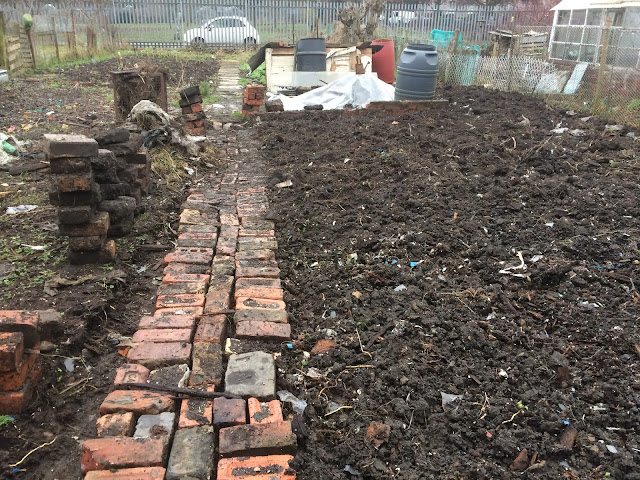Clay? Gravel?
The bloomin' rain lasted until an hour before dusk today, so no chance of getting to the plot. Been a dry January, so no complaints. Gave me time to think about all that gravel which is left over in the hand riddle. For every spadeful, (and a spadeful = a hand riddle-full), there's enough gravel to fill a half-pint glass, or thereabouts. Was it always there in the soil? I did a bit of research as the drizzle fell from a pale grey sky. Allotment research is a relief from what I was doing for "real" academic research for the doctorate, in that it's fine to yield to a temptation to wander off-topic. On one such detour, I learned that it is opined that adding sand to clay is a really counterproductive thing to do, and will result in concrete. I also learned from the RHS the definition of "heavy clay"; (to summarize, if you can roll it into a ball, thence to a sausage, and, after giving it a rub, if it's shiny, that's heavy clay - no, really .)





